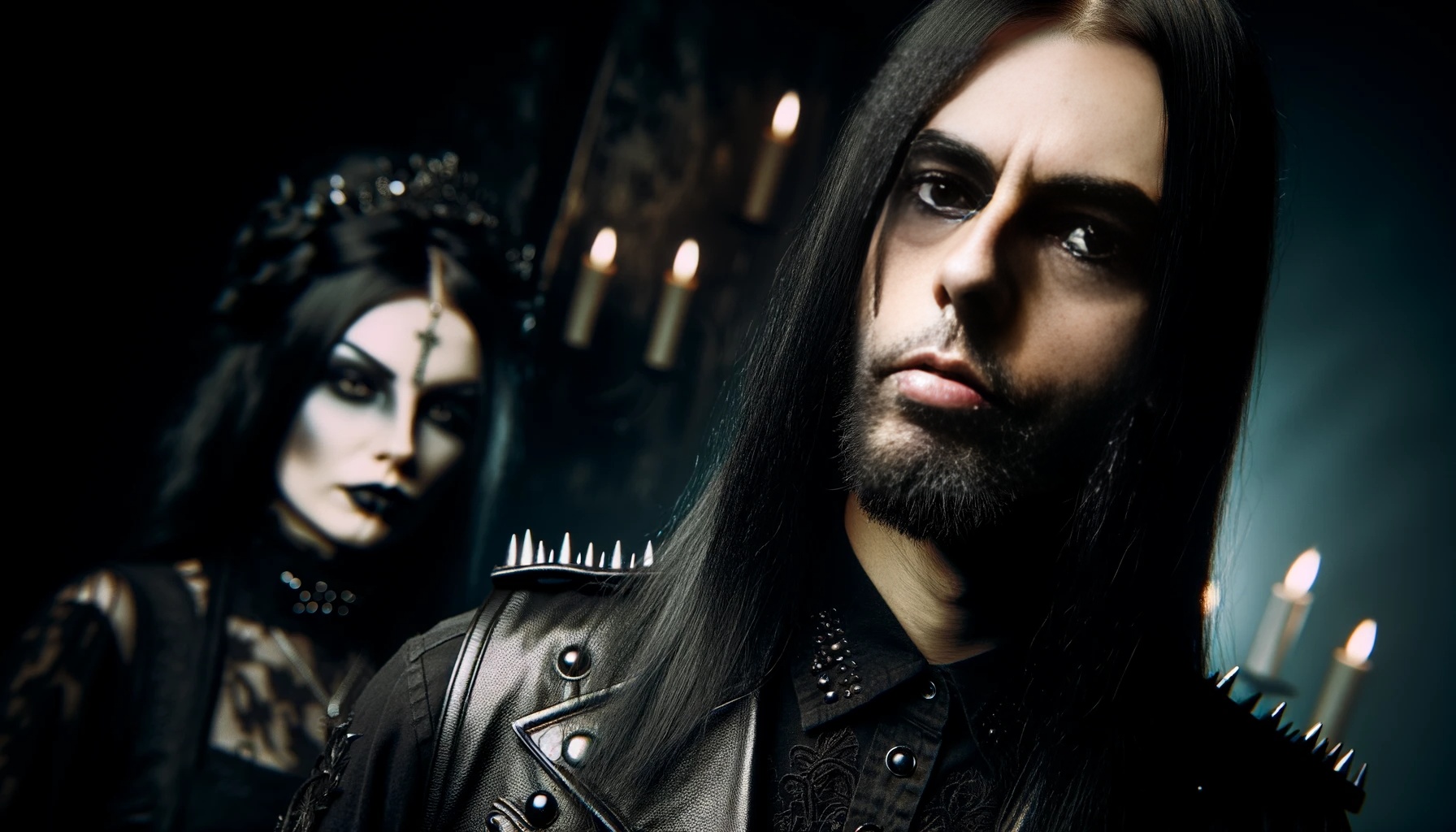Metal and Gothic fashion are iconic subcultures that have transcended borders and gained popularity across the globe. Embracing dark aesthetics, bold styles, and a celebration of individuality, both subcultures have left an indelible mark on the fashion world. This comprehensive blog article takes a global perspective, exploring the fascinating ways in which Metal and Gothic Fashion have been adopted, adapted, and reinterpreted in diverse cultures around the world. From the streets of Tokyo to the underground scenes of Europe and beyond, we unveil the rich tapestry of unique expressions of identity and style.

The Universality of Metal and Gothic Fashion
1. The Spirit of Rebellion
Metal and Gothic fashion share a common thread of rebellion against mainstream norms. Across cultures, these subcultures embrace dark, edgy aesthetics that challenge traditional beauty standards, making a bold statement about individuality and nonconformity.
2. Music as a Driving Force
Music plays a pivotal role in the emergence and evolution of both Metal and Gothic fashion. From Black Sabbath to Marilyn Manson, and from The Cure to Bauhaus, the influence of iconic bands on fashion is unmistakable, resonating with fans worldwide.
3. The Power of Community
Both subcultures foster a strong sense of community and camaraderie among their followers. The bond formed through shared interests in music and fashion creates a global network of like-minded individuals.
Gothic Fashion Around the World
1. Western Gothic Subcultures
The Western world has seen a proliferation of Gothic subcultures, each with its unique style. From traditional Victorian Goth and Steampunk in Europe to American Pastel Goth and Victorian-inspired styles in the United States, Gothic fashion has taken on diverse forms across the West.
2. Japanese Visual Kei
Japan’s Visual Kei movement is a visual representation of the fusion of Metal and Gothic aesthetics with Japanese culture. This flamboyant style features elaborate makeup, androgynous looks, and an eclectic mix of Western and Eastern influences.
3. The Emergence of Cyber Goth
Cyber Goth is a subgenre that originated in Germany and rapidly spread across the globe. This futuristic and industrial-inspired style incorporates neon colors, PVC materials, and cyber accessories, blending elements of Cyberpunk with Gothic fashion.
Metal Fashion Across Cultures
1. Scandinavian Metal Fashion
Scandinavian countries, particularly Finland and Sweden, have a robust Metal scene with distinctive fashion trends. The combination of leather, spikes, and Viking-inspired accessories showcases a powerful and bold appearance.
2. Latin American Metal Styles
Latin American countries boast vibrant Metal scenes with fashion styles that combine cultural influences with traditional Metal aesthetics. The integration of indigenous patterns, tribal tattoos, and local fabrics adds a unique touch to the Metal fashion in these regions.
3. Middle Eastern Metal Culture
In the Middle East, Metal fashion has emerged as an expression of rebellion and defiance against conservative societal norms. Combining traditional garments with metal accessories and dark makeup, the Metal scene in the region reflects a fusion of cultural and subcultural identities.
The Globalization of Metal and Gothic Fashion
1. Social Media and Global Connectivity
The rise of social media and the internet has facilitated the globalization of Metal and Gothic fashion. Fans from different corners of the world can connect, share, and exchange fashion ideas and inspirations, transcending geographical boundaries.
2. Influential Fashion Festivals
International fashion festivals and music events have become platforms for the convergence of Metal and Gothic fashion enthusiasts. Events like Wave Gotik Treffen in Germany and Download Festival in the UK have become epicenters for global fashion trends.
3. Cross-Cultural Inspirations
Globalization has led to the blending of diverse cultural influences into Metal and Gothic fashion. This cross-pollination of ideas creates a rich and eclectic tapestry of styles that reflect the global nature of these subcultures.
Fashion as a Reflection of Identity
1. Preserving Cultural Identity
In some regions, the adoption of Metal and Gothic fashion intertwines with preserving cultural heritage. Indigenous elements, folklore, and traditional motifs are often incorporated into the fashion to celebrate and preserve cultural identity.
2. Challenging Social Norms
In countries with conservative fashion norms, Metal and Gothic fashion enthusiasts challenge societal expectations by embracing bold and unconventional styles. This can be a form of protest and an expression of individuality.
3. Creating a Safe Space
In areas where Metal and Gothic cultures face discrimination or misunderstanding, fashion becomes a means of creating a safe space and fostering a sense of belonging for like-minded individuals.
The Role of Ethical and Sustainable Fashion
1. Embracing Sustainable Choices
The global impact of fashion on the environment has led many Metal and Gothic fashion enthusiasts to embrace sustainable and ethical practices. From upcycling clothing to supporting eco-friendly brands, these subcultures are championing fashion with a conscience.
2. Supporting Local Artisans
In many regions, Metal and Gothic fashion enthusiasts support local artisans and designers who create handmade and unique fashion pieces. This collaboration fosters an exchange of ideas while promoting traditional craftsmanship.
3. Vintage and Second-Hand Fashion
The appreciation for vintage and second-hand fashion is prevalent in the Metal and Gothic communities. Thrift shopping and vintage finds not only align with the subcultures’ aesthetic but also reduce the environmental impact of fast fashion.
Metal and Gothic fashion are powerful subcultures that have transcended cultural boundaries, reflecting unique expressions of identity and style across the globe. From Visual Kei in Japan to Scandinavian Metal fashion and Latin American Metal styles, these subcultures have woven themselves into diverse cultural tapestries. As the world becomes more interconnected, the globalization of Metal and Gothic fashion continues to enrich these subcultures with new inspirations and influences. Embracing ethical and sustainable practices further underscores the subcultures’ commitment to fashion with a purpose. From local artisan collaborations to cross-cultural fusion, the global perspective of Metal and Gothic fashion celebrates the unity in diversity and the spirit of rebellion that knows no borders. That’s al about Metal and Gothic Fashion in Different Cultures.
Now go follow me on social media or head back to the home page.
Follow me on social media


